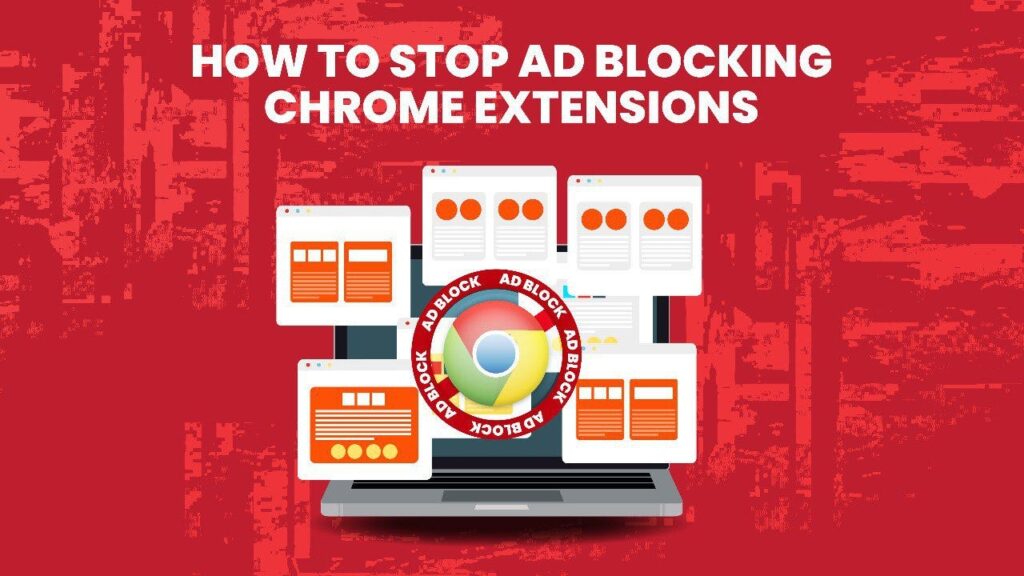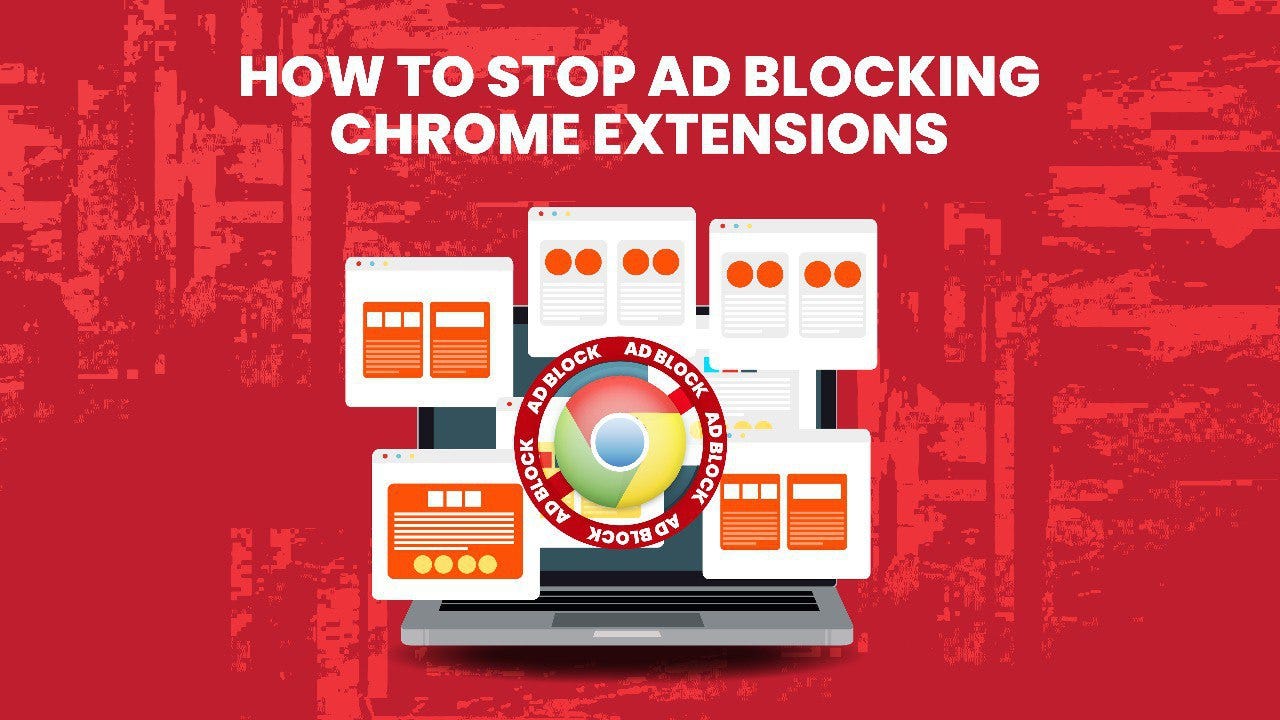
Ad Blocking in Chrome: A Comprehensive Guide to Enhanced Browsing
In today’s digital landscape, online advertising has become ubiquitous. While ads can be a necessary evil supporting free content, their excessive nature and intrusive formats often detract from the browsing experience. This has led to the rising popularity of ad blocking in Chrome, empowering users to take control of their online environments. This article delves into the world of ad blocking in Chrome, exploring its benefits, methods, potential drawbacks, and best practices for a smoother, safer, and more efficient browsing experience.
The Rise of Ad Blocking
The internet was initially envisioned as a free and open space for information sharing. However, the monetization of online content through advertising has transformed the web. While advertising supports content creation, the proliferation of intrusive ads, including pop-ups, auto-playing videos, and tracking cookies, has created a growing demand for ad blocking in Chrome and other browsers. Users are increasingly concerned about privacy, data security, and the overall quality of their online experience.
Why People Use Ad Blockers
Several factors contribute to the widespread adoption of ad blocking in Chrome:
- Improved Browsing Speed: Ads can significantly slow down page loading times. By blocking them, users experience faster browsing.
- Reduced Data Consumption: Ads consume bandwidth, which can be costly for users with limited data plans, especially on mobile devices.
- Enhanced Privacy: Many ads track user behavior across websites, raising privacy concerns. Ad blockers help prevent this tracking.
- Elimination of Intrusive Ads: Pop-ups, auto-playing videos, and other disruptive ad formats can be extremely annoying.
- Protection Against Malvertising: Malicious ads (malvertising) can infect computers with malware. Ad blockers provide a layer of protection against this threat.
Methods of Ad Blocking in Chrome
There are several ways to implement ad blocking in Chrome:
Browser Extensions
The most common method is through browser extensions. Numerous ad blocking extensions are available in the Chrome Web Store. Some popular options include:
- AdBlock: One of the most widely used ad blockers, offering a comprehensive blocking experience.
- Adblock Plus: Another popular choice, known for its customizable filters and acceptable ads program (allowing non-intrusive ads).
- uBlock Origin: A lightweight and efficient ad blocker that uses minimal resources.
- Privacy Badger: Developed by the Electronic Frontier Foundation (EFF), Privacy Badger automatically learns to block trackers and intrusive ads.
To install an ad blocking extension, simply visit the Chrome Web Store, search for the desired extension, and click “Add to Chrome.”
Built-in Ad Blocking Features
Chrome itself offers some built-in ad blocking features, though they are not as comprehensive as dedicated ad blocking extensions. Chrome’s built-in ad blocker focuses on blocking ads that violate the Better Ads Standards, which are designed to improve the online advertising experience. These standards target intrusive ad formats like pop-up ads, auto-playing video ads with sound, and prestitial ads that cover the main content.
To enable Chrome’s built-in ad blocker:
- Open Chrome settings.
- Click on “Privacy and security.”
- Click on “Site settings.”
- Scroll down to “Content” and click on “Ads.”
- Enable the “Blocked on sites that show intrusive or misleading ads” option.
DNS-Based Ad Blocking
Another method is to use DNS-based ad blocking. This involves configuring your device or router to use a DNS server that filters out domains known to serve ads and trackers. This approach blocks ads at the network level, affecting all devices connected to the network. Popular DNS-based ad blocking services include:
- NextDNS: A customizable DNS service that blocks ads, trackers, and malware.
- AdGuard DNS: Offers free and paid DNS servers that block ads and trackers.
- Cloudflare: While primarily known for its CDN and security services, Cloudflare also offers a DNS service with optional malware and ad blocking.
The Impact of Ad Blocking
Ad blocking in Chrome has a significant impact on both users and the online advertising industry. While users benefit from a cleaner and faster browsing experience, publishers and advertisers face challenges in generating revenue.
Benefits for Users
- Faster Page Loading: Blocking ads reduces the amount of data that needs to be downloaded, resulting in faster page loading times.
- Reduced Data Usage: Less data consumption saves bandwidth and can reduce mobile data charges.
- Improved Privacy: Ad blockers prevent tracking and protect user data.
- Enhanced Security: Blocking malicious ads reduces the risk of malware infections.
- Better Browsing Experience: Eliminating intrusive ads creates a more enjoyable and less distracting browsing environment.
Challenges for Publishers and Advertisers
The widespread use of ad blocking in Chrome poses several challenges for publishers and advertisers:
- Reduced Revenue: Blocking ads directly impacts publishers’ revenue, as they rely on advertising to support their content.
- Difficulty in Monetizing Content: With ad blocking rates on the rise, publishers struggle to find alternative ways to monetize their content.
- Need for Alternative Revenue Models: Publishers are exploring alternative revenue models such as subscriptions, donations, and sponsored content.
- Impact on Free Content: The decline in advertising revenue may lead to fewer free content options for users.
Ethical Considerations
The use of ad blocking in Chrome raises ethical questions. While users have the right to control their browsing experience, blocking ads can negatively impact publishers and content creators who rely on advertising revenue. Some argue that ad blocking is akin to stealing content, while others maintain that it is a legitimate response to intrusive and privacy-invading advertising practices.
The Acceptable Ads Initiative
To address these ethical concerns, some ad blockers, such as Adblock Plus, have implemented an “Acceptable Ads” program. This program allows non-intrusive ads to be displayed to users who have opted in. The idea is to support publishers while still providing a better browsing experience for users. However, the Acceptable Ads program has been controversial, with some critics arguing that it is a form of extortion.
Best Practices for Ad Blocking in Chrome
To maximize the benefits of ad blocking in Chrome while minimizing the potential drawbacks, consider these best practices:
- Choose a Reputable Ad Blocker: Select an ad blocking extension or service from a trusted provider with a proven track record.
- Customize Your Filters: Most ad blockers allow you to customize your filters to block specific types of ads or websites.
- Support Websites You Value: Consider whitelisting websites that you value to support their content creation.
- Explore Alternative Revenue Models: If you appreciate a website’s content, consider supporting it through subscriptions, donations, or other means.
- Stay Informed: Keep up-to-date with the latest developments in ad blocking technology and best practices.
The Future of Ad Blocking
The future of ad blocking in Chrome is uncertain. As ad blocking technology continues to evolve, publishers and advertisers are developing new strategies to circumvent ad blockers. This has led to an ongoing arms race between ad blockers and ad tech companies. Some potential future trends include:
- More Sophisticated Ad Blocking Techniques: Ad blockers will likely become more sophisticated in their ability to detect and block ads.
- Server-Side Ad Insertion: Publishers may increasingly rely on server-side ad insertion (SSAI) to bypass ad blockers.
- Native Advertising: Native advertising, which blends seamlessly with the surrounding content, may become more prevalent.
- Focus on User Experience: Advertisers may prioritize user experience by creating less intrusive and more relevant ads.
Conclusion
Ad blocking in Chrome is a powerful tool that empowers users to take control of their online experience. By blocking intrusive ads, users can enjoy faster browsing, reduced data consumption, enhanced privacy, and improved security. However, it’s important to be aware of the potential impact of ad blocking on publishers and content creators. By following best practices and supporting websites you value, you can strike a balance between enjoying a better browsing experience and supporting the online content ecosystem. The key is to engage in responsible ad blocking in Chrome practices. [See also: Best Chrome Extensions for Productivity] [See also: Securing Your Chrome Browser: A Privacy Guide]

